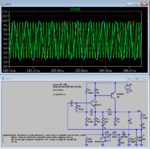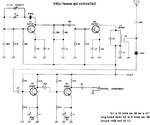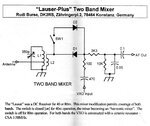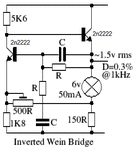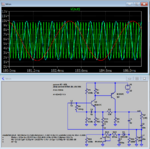neazoi
Advanced Member level 6
Hi,
I would like to built a simple audio oscillator in the 480Hz-2700Hz range with the next requirements:
1. Discrete components
2. Variable in the 480Hz-2700Hz range
3. Frequency to be varied with a single variable resistor preferably, not a stereo potentiometer or other dual controls, if possible
4. Single range, i.e not switching to be required for the whole 480-2700Hz
4. Low distortion, so as to avoid harmonics in the passband
Can you propose me any circuits, or present any simulations to try?
Thank you
I would like to built a simple audio oscillator in the 480Hz-2700Hz range with the next requirements:
1. Discrete components
2. Variable in the 480Hz-2700Hz range
3. Frequency to be varied with a single variable resistor preferably, not a stereo potentiometer or other dual controls, if possible
4. Single range, i.e not switching to be required for the whole 480-2700Hz
4. Low distortion, so as to avoid harmonics in the passband
Can you propose me any circuits, or present any simulations to try?
Thank you
